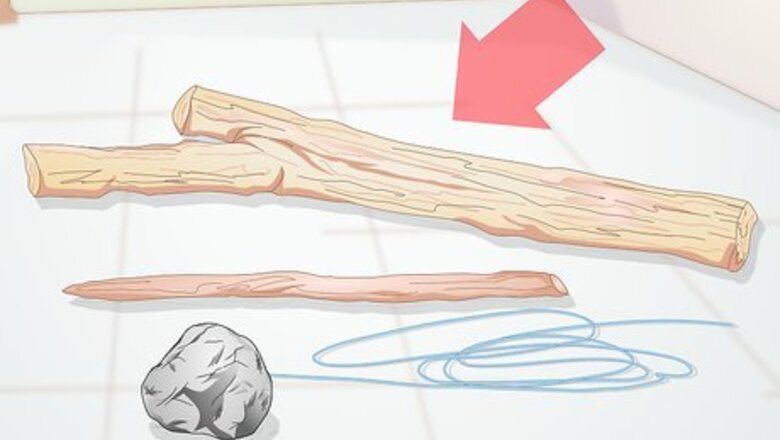
views
X
Research source
Building The Ojibwa Bird Pole
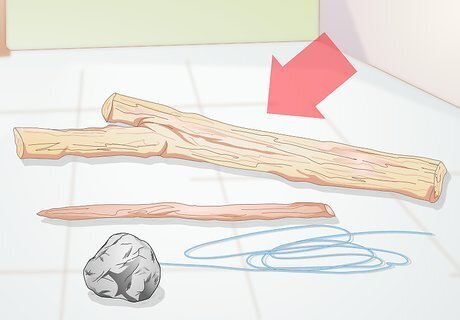
Use two sticks, a cord, and a rock to build a basic wilderness bird trap. Looking somewhat like an upside down "L," the Ojibwa Bird Pole has been a staple of indigenous hunters in Canada for centuries. Birds perch on a small horizontal branch, which you rig to fall under their weight. They are then caught in a noose positioned underneath before they can fly away. You'll need: The Pole: A large branch, roughly the width of a few fingers and 5-6 feet long. The Perch: A pencil-thin stick, roughly six inches long. A rock, roughly the size of your fist. A 3-4 foot cord or rope, shoestrings and sleeping bag chords will work. A knife.
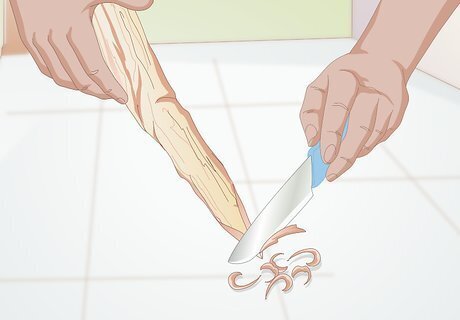
Sharpen both ends of the longer pole or stick. You drive the bottom side into the ground, so it needs to be sharp enough to plant. The sharpened top end prevents a bird from landing on the top, not your perch.
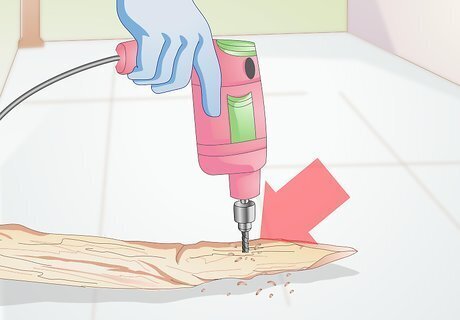
Drill a hole through the pole at one of the ends. It should be as wide as your smaller stick. Your perch is inserted into this hole, as well as the string.

Tie one end of the rope firmly around your rock. You just want the rock secured to one end of the string. You can use any knot that will keep the rock in place.
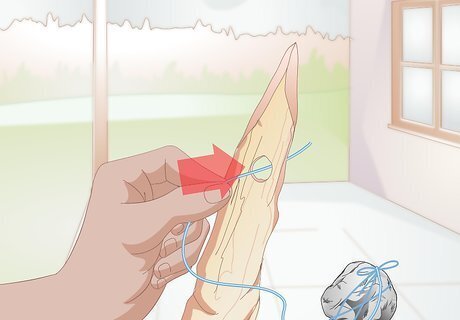
Thread the string through the hole and tie a small knot in it. The knot should be small enough that the string can still move freely through the post hole. The stick will jam in next to the string, creating the perch and also holding the string, and thus the rock, in place. The knot should be able to move freely through the hole in the pole when the stick isn't jammed in. Some trappers tie the small knot first, then put the stick in. Others put the stick in first. Experiment with what works for you.
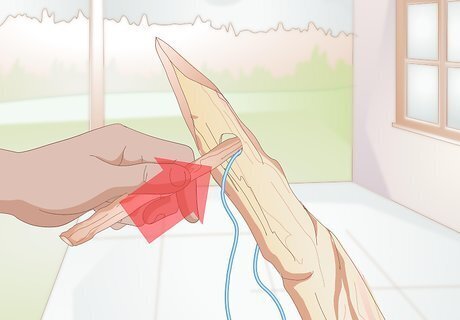
Wedge the thinner stick into the hole you drilled, next to your knot. The perch should be right next to the string, though the string should still move freely. This "perch" needs to fall under the weight of the bird in order to snare it, so don't jam it in too tightly. You should have two feet of string or more on the other side of your knot.
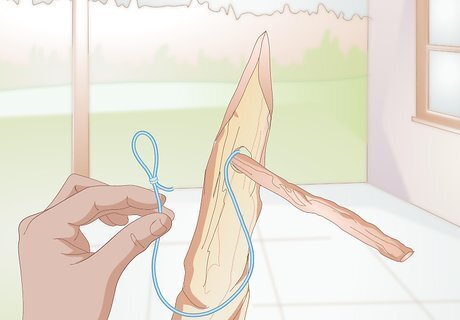
Tie a slip noose knot in the end of the string to make your snare. Make a noose big enough to fit your fist through. If you're unfamiliar with the slip noose knot, you can still make one easily with some practice: Double the string back on itself to make a U-shaped loop. Run the end of the string back towards the top of the loop. It will look a bit like a flattened "S." Wrap the end of the rope around the doubled line 2-3 times. Pull the rope tight, cinching the wrap around the doubled string.
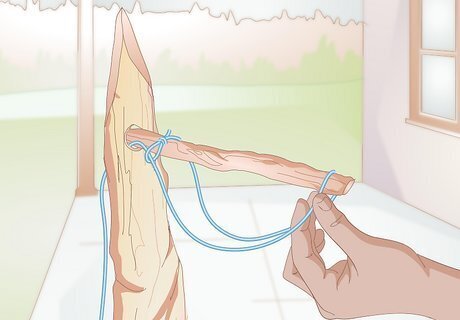
Thread the end of the rope through your noose, towards the pole. You'll be left with a circle of rope draped over your perch. The end of the noose will be at the end of the perch, and the noose knot itself will be close to the pole. You should have two semi-circles of rope draped off of the stick.
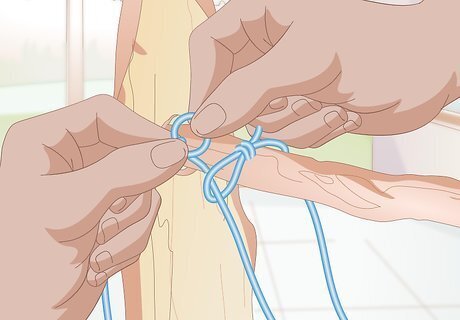
Tie a simple overhand knot right where the two sticks meet. An overhand knot is simply when you create a loop and pull the string through. All you have to do is wrap the end around the rope near your hole, creating a circle, then run the end through that circle. This should be right at the point where your two sticks meet.
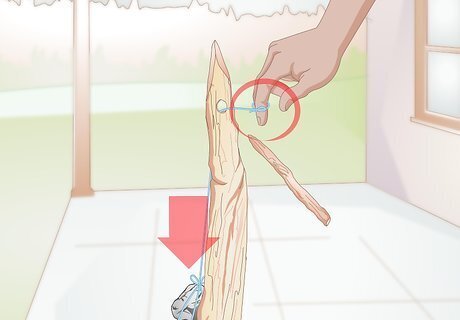
Check your trap by gently pushing down on the perch. As you do, the weight of the rock should pull the rope through the hole, which will quickly tighten the noose and grab your finger. Note, however, that these traps are very variable. Play with the size of the noose and the perch -- the closer they are to the same size, the more effective your trap will be. Also, try and tie the smallest knot possible in the beginning so that the rope can move freely through the hole -- you want it to snap shut quickly once the stick is removed.
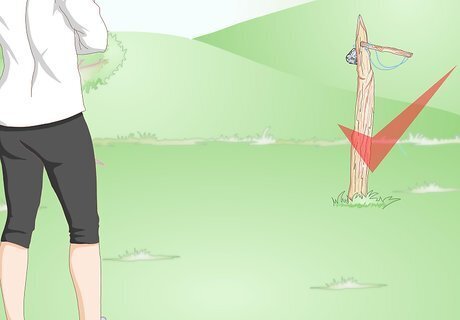
Place your trap where it is the best place for a bird to land. These traps are effective in open fields, where it is the best place for the bird to land. In the forest, most birds will choose tree branches. For more effective traps, place a little birdseed on the trap, adhering it with peanut butter.
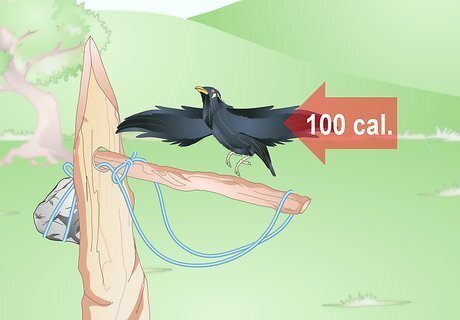
Note that small birds only provide minimal calories. Small birds, which are about all this trap can handled only provide about 100 calories apiece. Unless you have 4-5 successful traps, there are much better ways to look for food, including insects and game traps for rabbits and squirrels. Still, especially in the winter, these traps can be a viable source of nutrition when paired with other survival methods.
Building a Household Trap
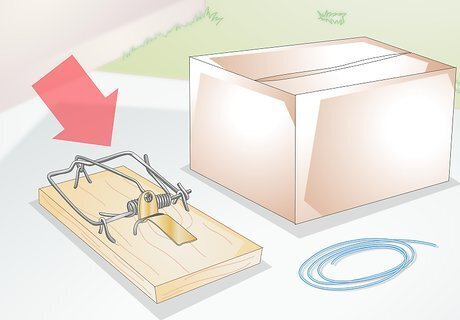
Build a backyard trap using a mousetrap, a cardboard box, and some string. This simple trap attaches a cardboard box to a mouse trap spring. When the bird lands on the trap, the box falls and contains it for later. The trap will also spring on squirrels and other small game, so it can be an effective trap in a survival scenario as well.
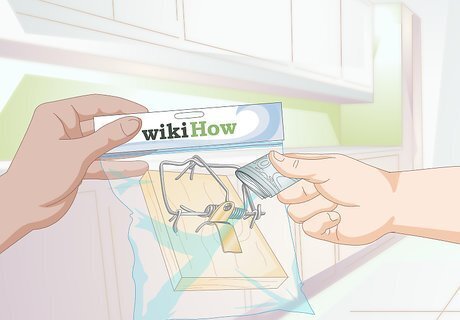
Purchase a live rat or mouse trap, the kind with a spring. You want the "classic" trap with a wooden board attached to a spring-loaded trap. They catch the mouse by flipping a metal bar on them when they touch the bait-laden trap. You can find these traps at almost any hardware store.

Cut a small hole in the center of a cardboard box. Use a pen to punch a whole in the middle of the box. You want the box to be roughly twice the size of the bird to trap it.
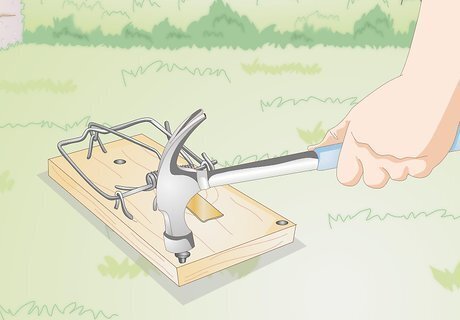
Fasten the mouse trap to the ground with 2-3 long metal nails. You want the trap to be secure enough that it doesn't move when the bird lands on it.
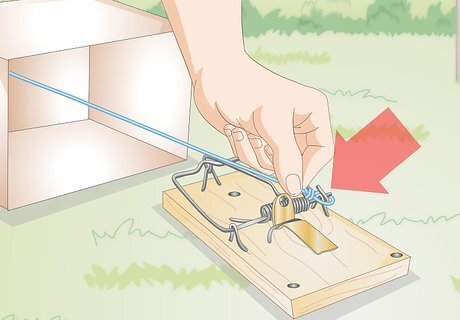
Tie a loop in one end of the thread. Temporarily loop it around part of the mouse trap. Thread the other end through the hole in the top of the box. Later on, you'll attach this loop to the spring. But, for now, you just need it looped somewhere on the trap to create tension in the line. Rest the box on it's edge, so that the open part faces the trap. It should be angled up, so that a bird could fly under the box and land on the trap.

Tie a loop in the end of the thread opposite the mousetrap. Run a nail through the loop, then nail this end of the string into the ground. Pull the nail out enough to keep the line tight and the box stays balanced on it's edge. The inside of the box should be facing the ground, with one side raised to allow birds to enter. Adjust the thread so that the highest edge of the box is only a foot or so in the air. The box needs to be high enough the a bird flies into it, but low enough that it can shut before the bird can fly out.
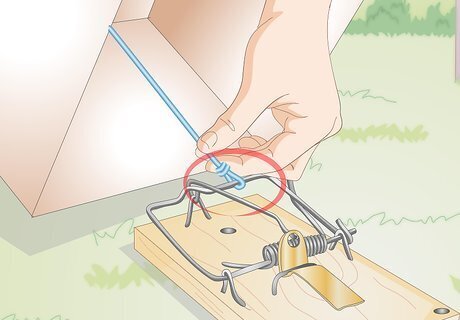
Tie the string around the loaded mousetrap spring. Load the spring but not the arm, as if you were setting it for a mouse. When you press on the trap, it should unload quickly. You want the string to be on the mechanism that spring when a mouse (or, in this case, bird) steps on it. When the bird lands on the trap the box will fall around the bird, trapping it. The tension of the string is holding the box in place. Make sure you tie the string so that it sits correctly. Test the string by pushing on the trap. The string should lose tension and box will fall.
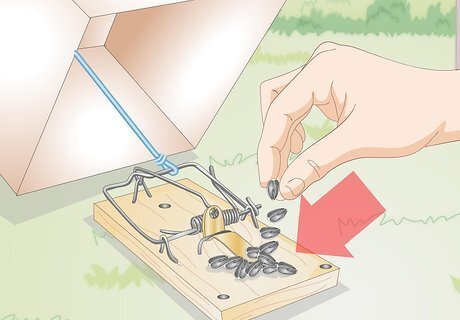
Place some bread or birdseed on the mousetrap as bait and wait for a hit. Do not go near the trap, since constant human activity near the trap will scare birds away. If you see that the box has fallen, go check it to see if you caught anything.
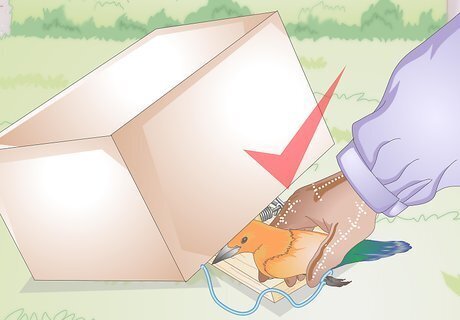
Wear long sleeves and gloves when grabbing a live bird. To get the bird out of your trap, lift the box slightly, reach in, and grab the bird firmly around the body. Wear gloves and long sleeves to prevent any pecking or scratching wounds. The darkness should disorient it enough that you can easily pick it off the ground. There is always the chance that you'll catch a rabbit or squirrel as well with your trap since it is on the ground. Be ready for anything.


















Comments
0 comment